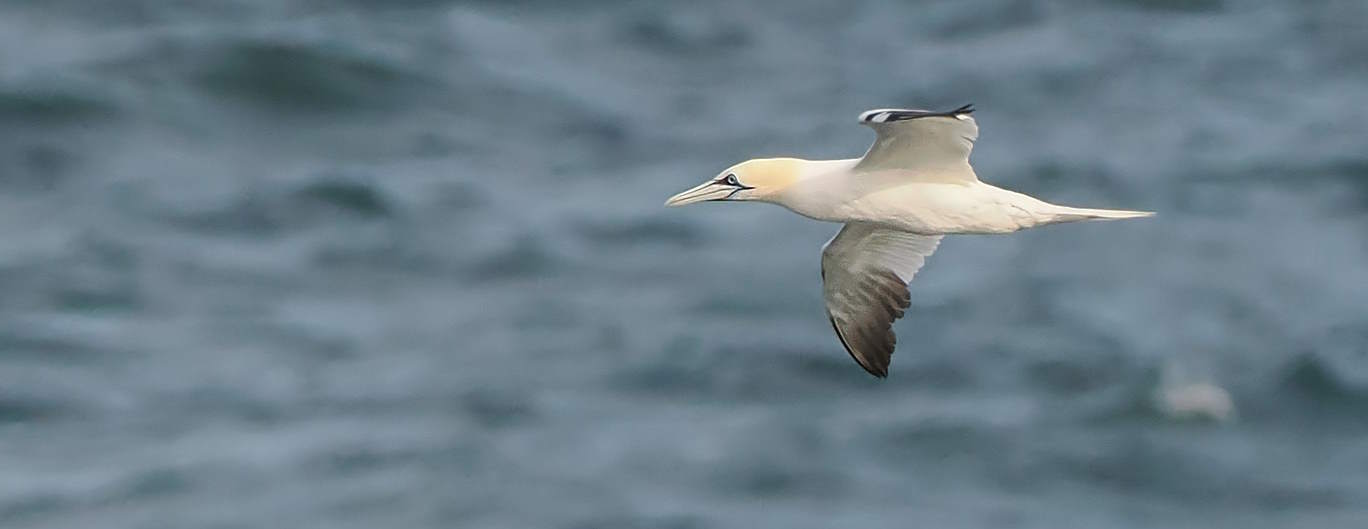by Andrew Whitehouse
South of the River Dee, where it meets the harbour of Aberdeen, the promontory of Girdle Ness extends eastwards into the North Sea. The harbour and estuary have long been hardened and industrialised, particularly since the development of the offshore oil and gas industry that is serviced by ships that are based here.
The peninsula is tipped by a lighthouse, engineered by Robert Stevenson, and a defunct foghorn, known locally as the Torry Coo. It gets its name partly from the loud mooing it once bellowed to passing sailors and partly from the Royal Burgh of Torry, a district of Aberdeen that lies just inland.
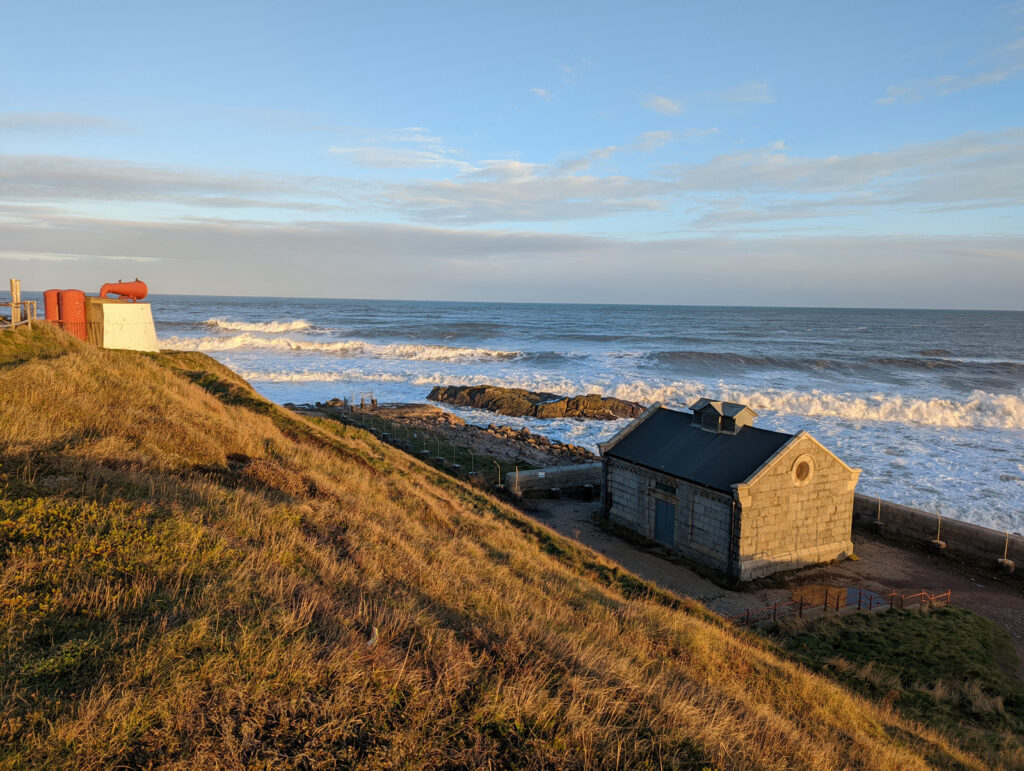
This is the place where I’ve lived for the past sixteen years. As a birder, it has become my local patch: a nearby area I watch regularly.
Girdle Ness is known to birdwatchers as a place to see migrating birds, either coming ashore after an arduous flight from the continent or passing by at sea. The sea is the most inscrutable of habitats around the headland. Terrestrial habitats are more easily explored and their depths, though complex, are perceptible and change rather slowly. The sea presents itself as an opaque medium that is always shifting, sometimes calm, sometimes turbulent.
But these perceptible changes in sea state are only part of what lies beneath. Climate change exerts an influence on the sea that land dwellers are unlikely to notice, particularly as sea temperatures rise to previously unknown levels. But seabirds are acutely sensitive to these shifts at and below the surface, revealing to those watching something of what is happening, of the startling ecological shifts that can take hold rapidly as the Anthropocene emerges.
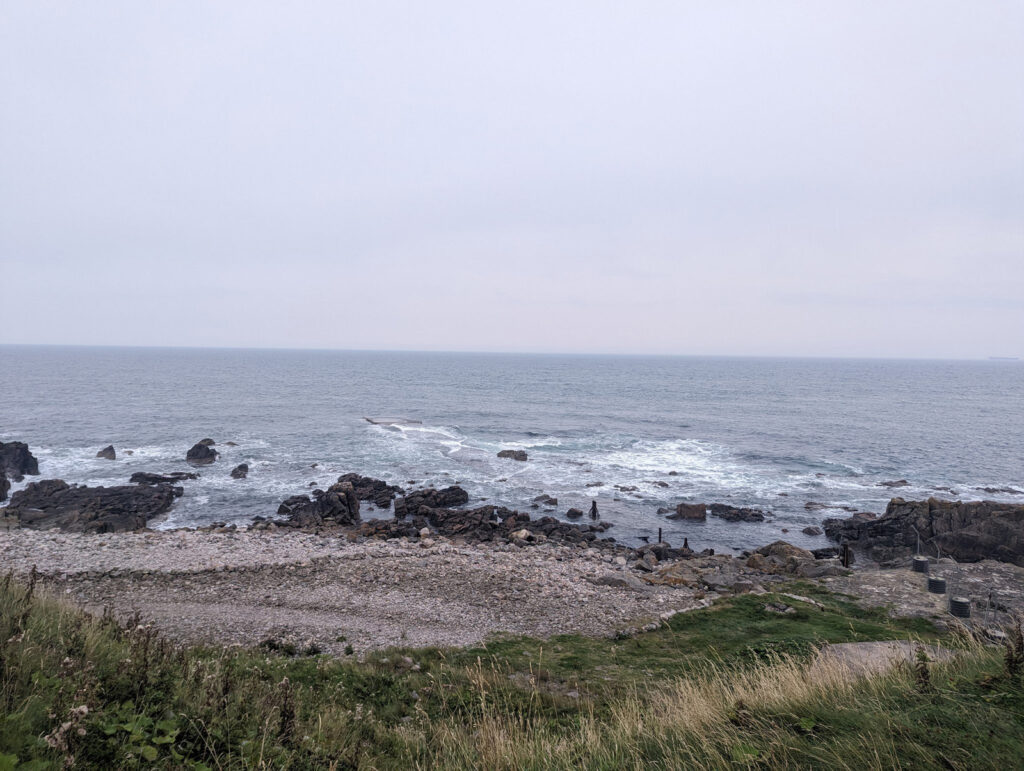
To patch birders like me, the changes in seabird habits and numbers are readily perceptible, far more than they would be to someone visiting a place casually or as a one-off. Seasonal slippages and unsettling shifts and movements are revealed against the lived experience of tentative baselines.
This is a story of the weird autumn of 2023, told through the sea and its avian inhabitants. It’s a story of heat and storms, of foam and waves, of starvation and abundance, of strange success and worrying loss.
July and August
The seabird autumn begins when birds finish breeding in mid- to late July. It’s normally a time of abundance, with the year’s fledglings taking to the water or the skies to feast on abundant shoals of fish.
This year, the seas seemed more fecund than normal; huge heaving flocks of birds gathered in frenzies, often accompanying small groups of Minke Whales. This has been a good year for cetaceans, perhaps partly because they’re still rebounding from long-term persecution. For a while, I see whales almost every time I head out to the end of the headland, always a swirl of gulls, auks, and shags in their midst, taking off as one just before a dark arch of back and dorsal fin breaks the surface.
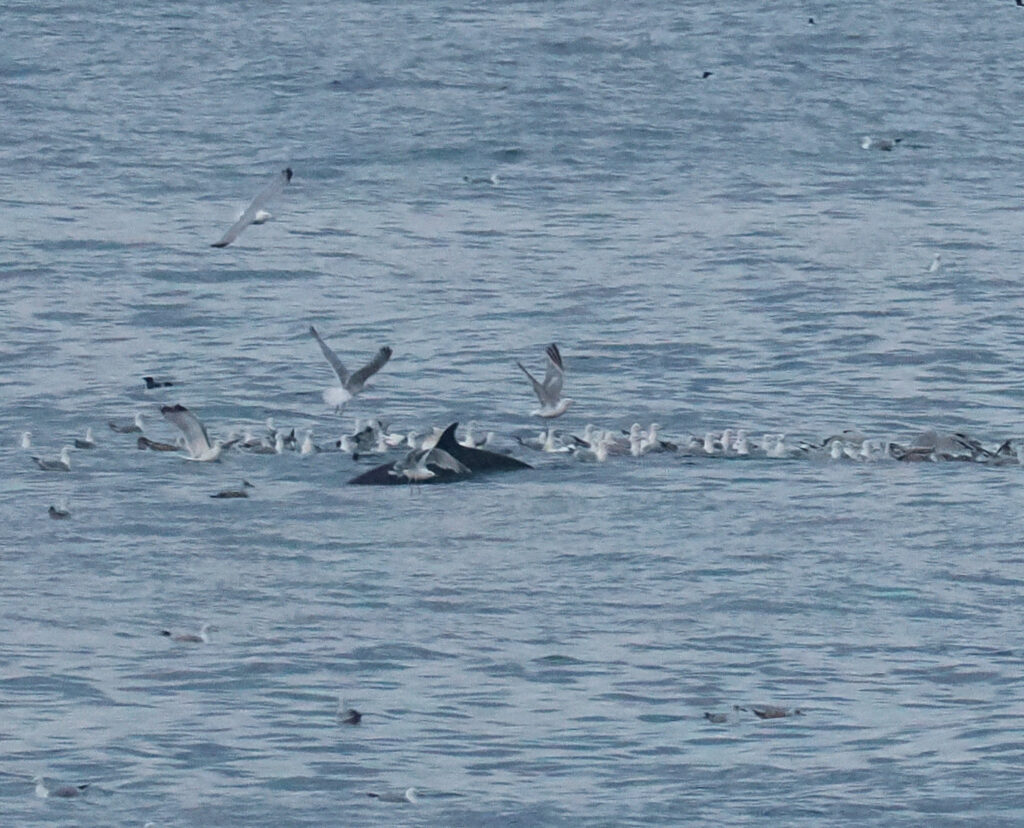
At the end of the month, a pod of Pilot Whales gathers: the first time anyone has seen them locally. We worry that they might ground themselves on Aberdeen beach, but after an hour or so of circling in a tight pack, they continue calmly southwards.
Grey Seals are a more familiar presence but now they have taken to hauling out on the rocks below the foghorn, singing across the waves, the sound mixing with the tremulous warbling of young Guillemots and Razorbills, begging to their parents for fresh fish.
There is abundance, more than I’ve seen for a while, but there are some odd developments too.
By late summer, the harbour becomes a huge roosting and loafing area for Kittiwakes, sometimes local birds from the breeding colonies of the Aberdeenshire coast, and sometimes from further afield. I once found a colour-ringed bird from a colony in Lowestoft, much further to the south. They normally gather in their thousands on the huge concrete harbour breakwaters, but this year they seem not to favour these dense gatherings. Instead, a small group are drawn to an artificial embankment of boulders that lines the southside of the harbour just by the road. This allows for some close views, but I wonder why they have eschewed their normal resting places.
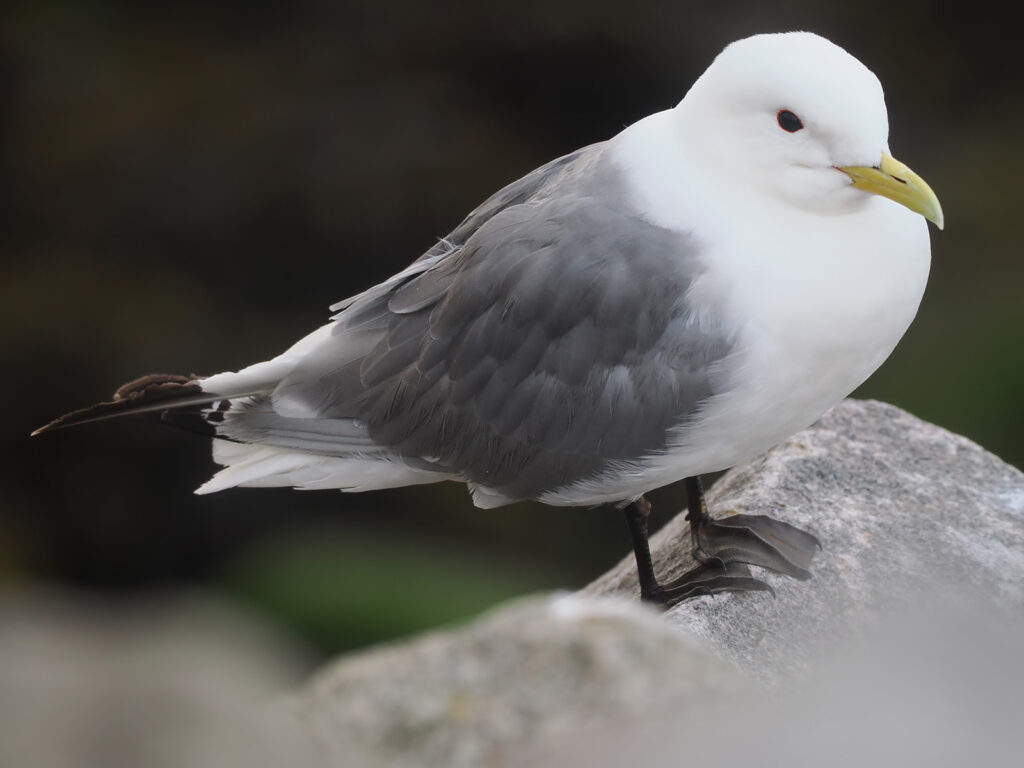
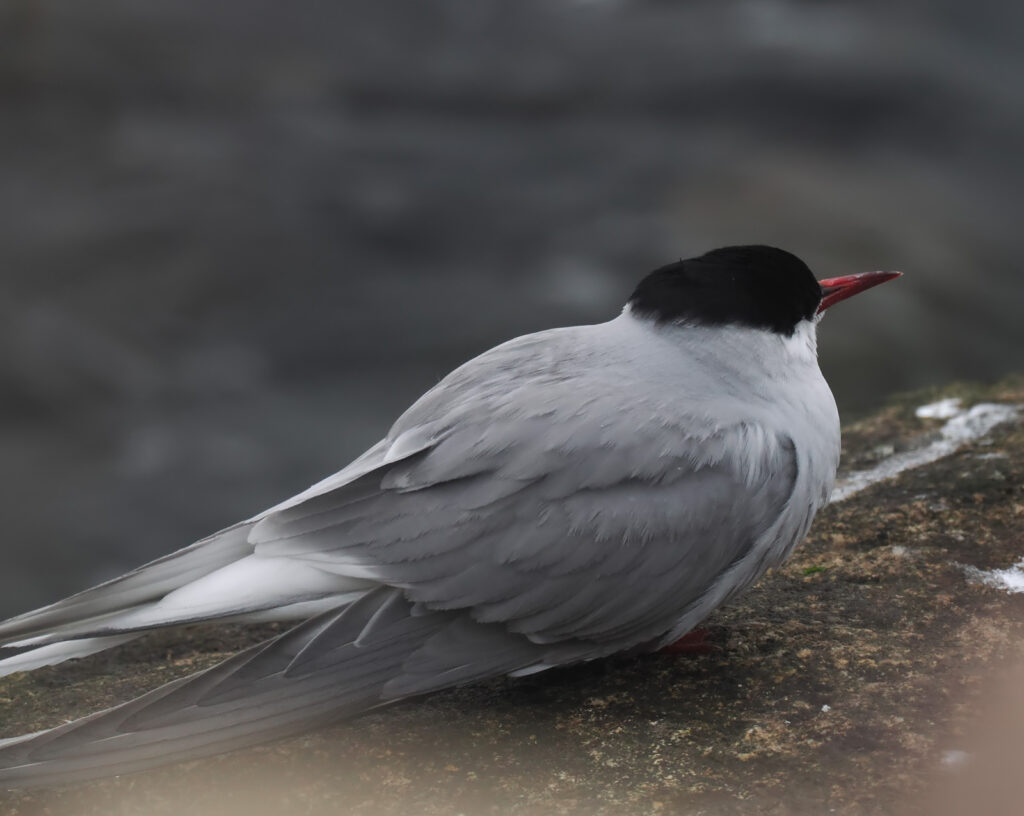
The spectre of avian influenza, which afflicted many local seabirds in 2022, lingers over these gatherings. Perhaps the Kittiwakes have been unsettled by losses, by the smell of death, by their own sense that places that once seemed safe no longer give sanctuary. A sickly Arctic Tern appears one evening among the Kittiwakes. It has gone by the next day.
August begins in similar vein, but after I return from a break, a shift has transpired. The feeding frenzies have gone; the seas have quietened. The hordes of Kittiwakes I expect in late summer are nowhere to be found. Instead, they appear in small numbers but in odd places: one juvenile flying inland over the woods as if it doesn’t yet realise that the sea is its home.
Amidst the strangeness, there are bursts of abundance: large numbers of Arctic Terns rasp and dive offshore. Flocks pass by in their dozens most evenings, the majority birds of the year. Somewhere, they have escaped the ravages of H5N1 to have a good breeding season.
September
Early September is usually the time of year when seawatching reaches its peak in the North Sea. Most evenings, I head out to the foghorn with my telescope, scanning the sea methodically to catch sight of passing seabirds. It’s the best time for more uncommon seabirds, particularly those normally only found in the Atlantic.
In recent years, circling wind patterns have pulled those birds over the top of Britain and into the North Sea from the west to give some excitement to patch birders on the east coast: large numbers of Sooty Shearwaters and the occasional Great Shearwater, both from the south Atlantic; passages of Long-tailed Skuas migrating from Scandinavia; even a Fea’s Petrel, a rare visitor from Madeira. This year, the passage of locally rare species is more subdued, but the local birds seem to have gone too.
Aberdeen is famous for its gulls and by late summer, the young birds from harbourside and rooftop colonies should swell the ranks that crowd around harbour breakwaters. Thousands of big, rough looking Herring Gulls dominate the air and the interstitial places where land and sea congeal. But this year, they are somewhere else. Just a few hundred linger around the harbour, the kind of low numbers we normally don’t see until winter, when most local birds head north to the fishing harbours of Peterhead and Fraserburgh to feed on trawler scraps.
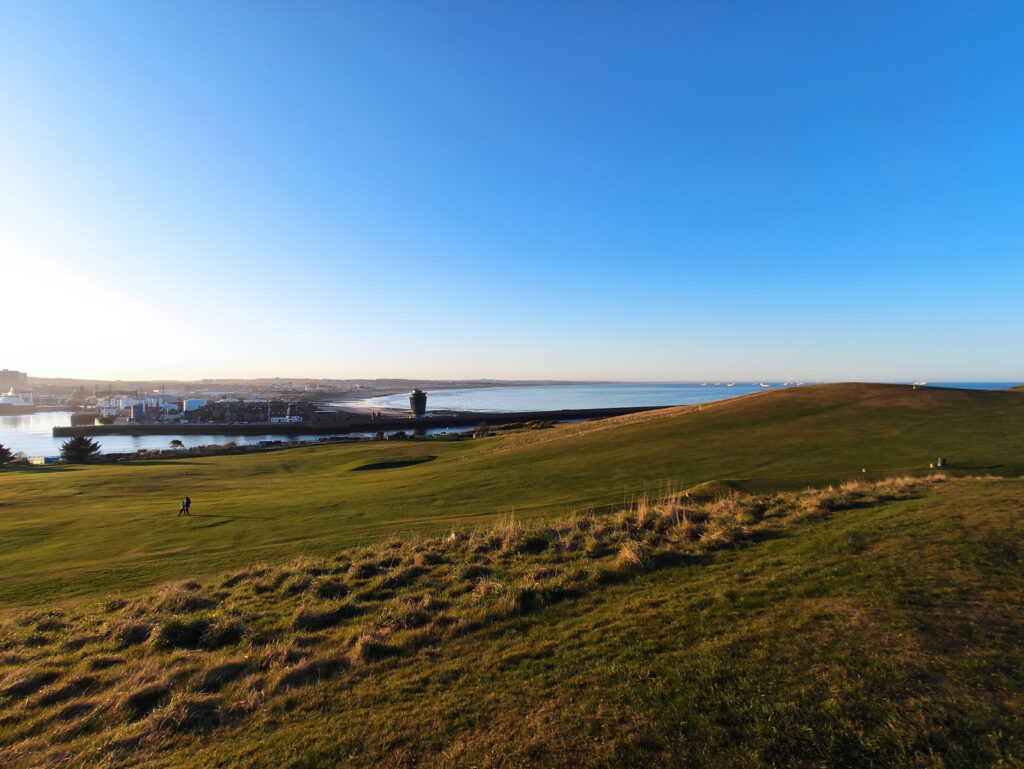
The wintery numbers don’t coincide with colder conditions but with an unusual warm spell. For several days, the temperatures top 20 degrees centigrade. This feels like the warmest summer I can remember in Aberdeen, but it’s now supposed to be autumn.
It may feel like summertime, but the living isn’t easy. There are few fish to jump, and the birds have quickly realised this. Those that can easily leave, like the gulls and Kittiwakes, have probably gone elsewhere.
Those that can’t leave or travel far, particularly short-winged Guillemots with their attendant young, have a bigger problem. When Guillemots start appearing in the harbour in numbers, I always assume they’re in trouble. It doesn’t generally happen until later in autumn when storms make feeding harder. This year, there are numerous birds here much earlier and they start moving up the River Dee, where I’ve never seen them before.
The characteristic early autumn sound of young Guillemots begging parents for food is entirely absent, presumably because the young have all succumbed. But to what? Speculation pivots between Avian Influenza and starvation. Initial tests of dead birds by scientists favour the latter explanation. Could it be that the sea surface temperatures, which are unusually high, have shifted the distribution of small fish that the Guillemots and other seabirds rely on?
Despite the losses and absences, the month ends with some odd excesses. Little Gulls are visitors from northern Europe, and they have become more frequent in recent autumns. This year, there are regular small parties feeding offshore, perhaps pushed north from their regular haunts in the Forth and the Tay.
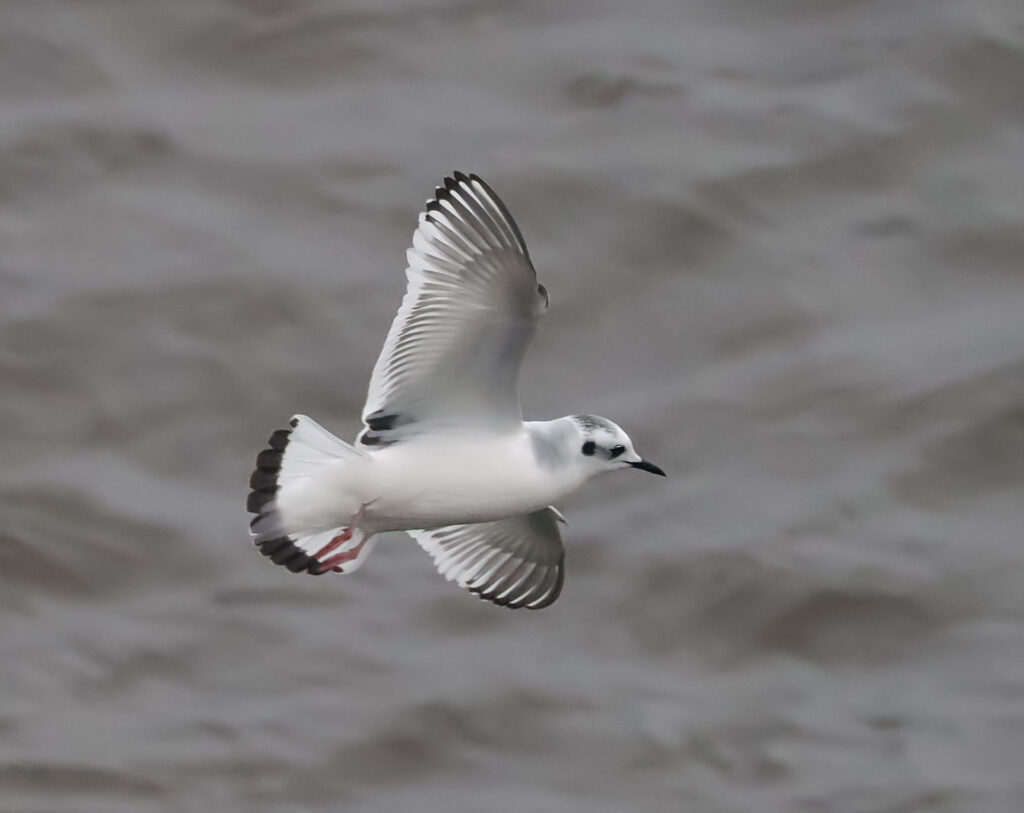
More startling is the development of a large roost of terns on the harbour breakwater. The breakwater provides a safe space where gulls, Kittiwakes and Cormorants loaf about and preen. Terns tend to use the rocks of nearby Greyhope Bay, but now seem to find the flat but crumbling concrete of the breakwater to their liking. Subtle shifts in infrastructural affordances invisible to humans are noticed by the birds.
More startling are the numbers. On September 29th I count 280 Common Terns gathering at dusk. This is much the highest count I have ever made here. It happens on a date when the terns would normally have left by. Why are more Common Terns than ever lingering into the autumn? Where ‘should’ they have been? Almost all the terns are juveniles, so they have done well somewhere. This is, ostensibly, a good thing but unsettling, nonetheless. Climate change brings with it odd excesses and seasonalities, as well as losses.

October and November
The terns continued roosting into October, although their numbers began to dwindle. A few were still around by the middle of the month, several weeks after they would normally depart. Arctic Terns seemed to stay longer than the Commons, with eleven still present on the 18th.
The following day, Storm Babet arrived in northeast Scotland and provided the most prolonged spell of wind and rain I can recall. Three days of gale force easterlies churned the sea into a tumult. The harbour provided little shelter, with the breakwaters and piers pounded by waves and the shore submerged under a thick, bubbling layer of foam.
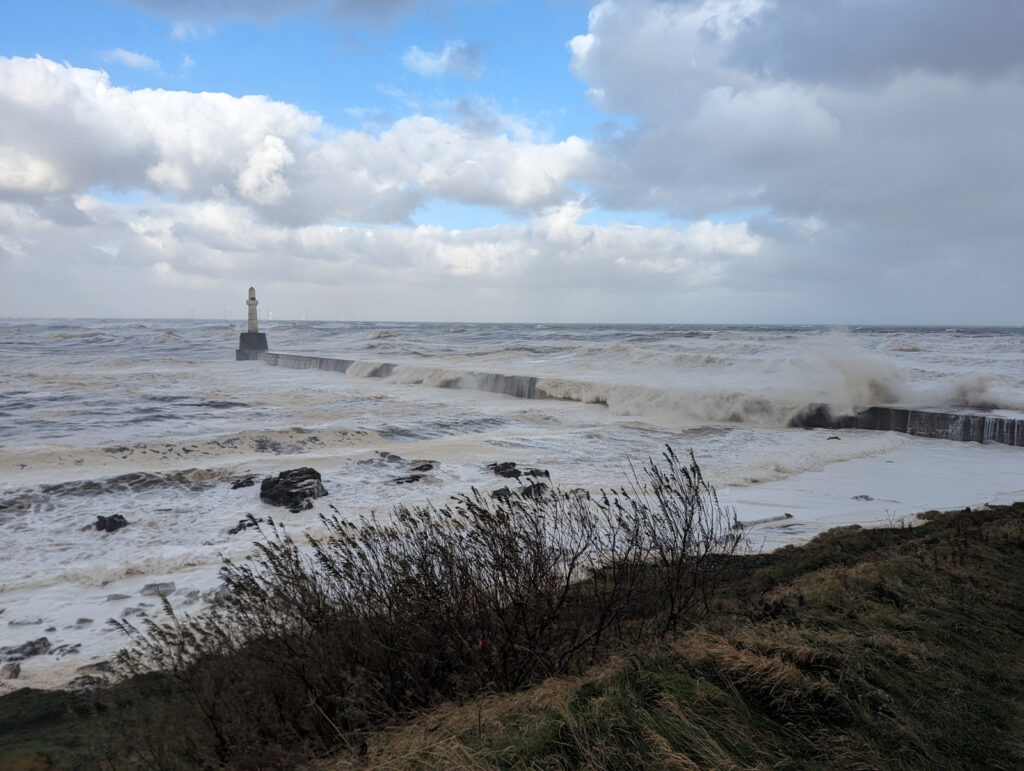
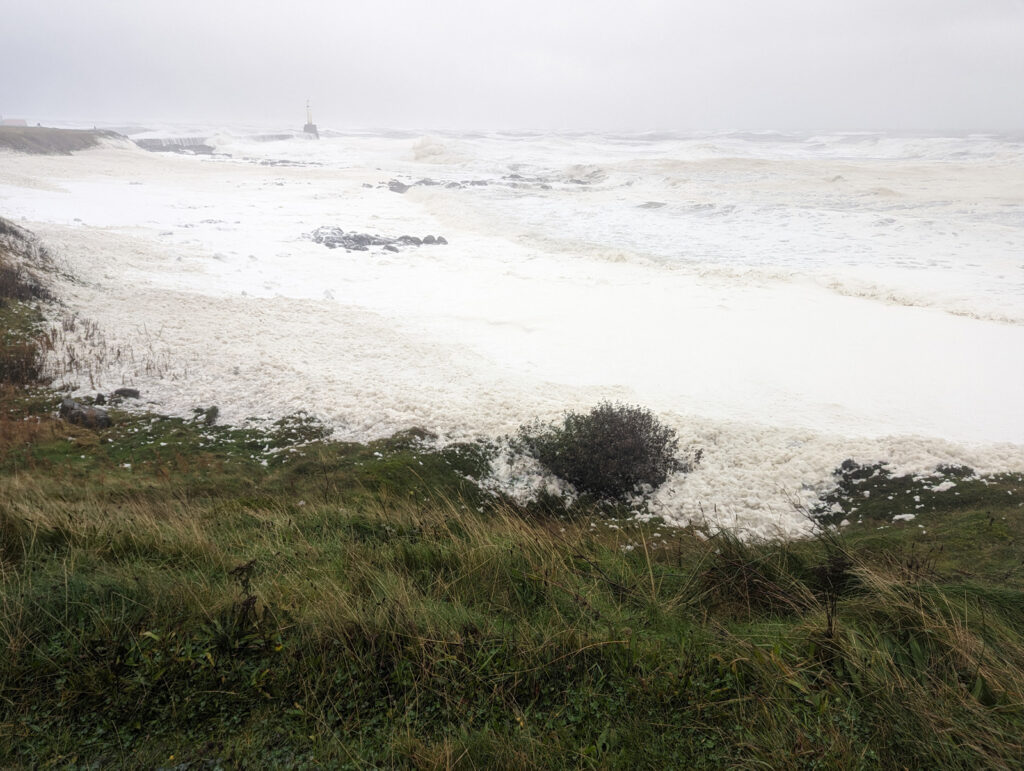
Birds had enough to deal with at sea, but the places where they rest and recuperate were now unavailable. Shags and Cormorants ordinarily gathered on the breakwater to dry their wings between fishing trips. Where could they safely dry out in the unending swirl of foam and spray? I kept encountering birds in odd places: a Shag sitting on the path, shifting in anguish as I approached to unsettle its imperfect resting place; Turnstones forced to pick among the leaf litter beneath the shoreline trees rather than their usual strandline workings; Ringed Plovers roosting nervously by the path, hoping they couldn’t be seen.
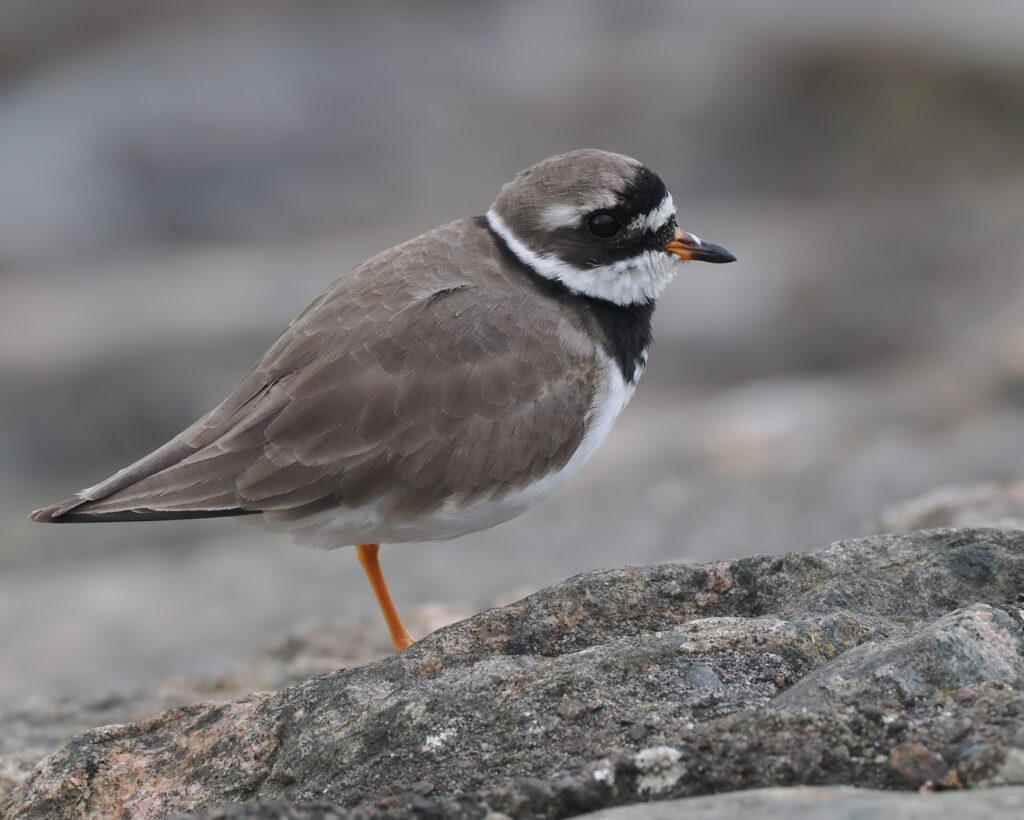
At the end of the month, after little break from storms, a couple of Arctic Terns sat about on the short grass of the golf course. In the absence of golfers in the storm, it was perhaps as good a place as any, but wasn’t somewhere I’ve seen terns before. Two birds that would normally have been on their way to the south Atlantic, sitting on a windswept fairway in northeast Scotland. They may have realised something strange was going on themselves.
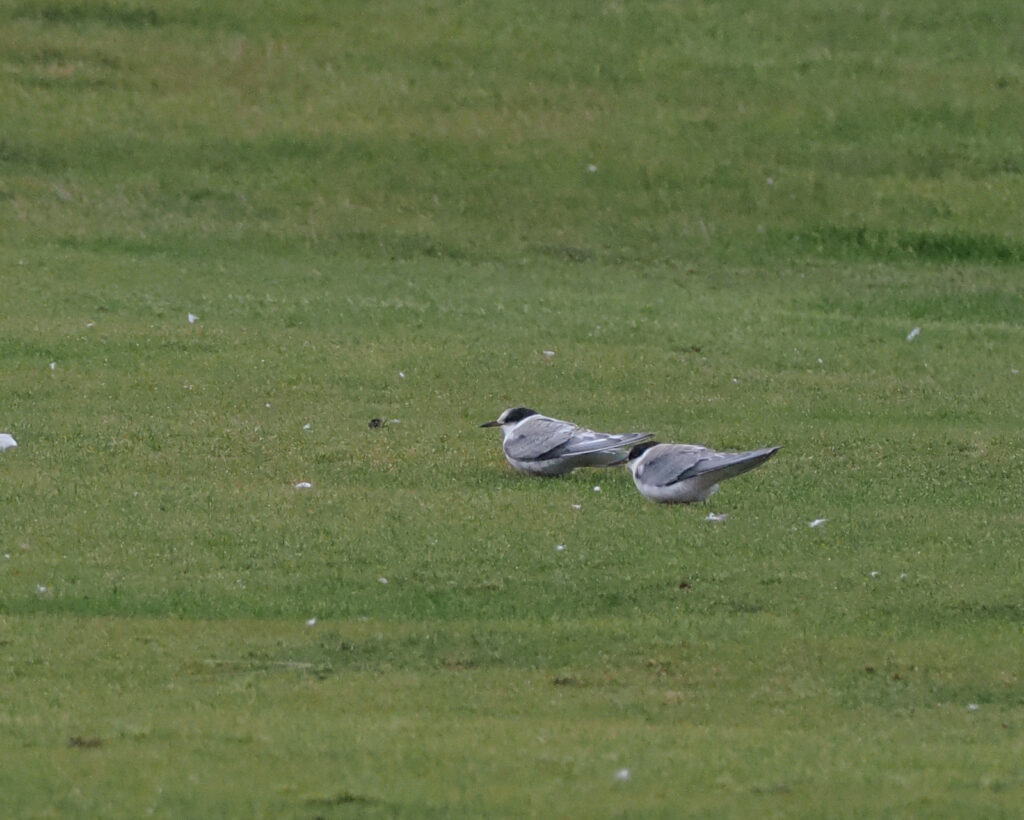
November entered with further storms, this time with the wind plunging from the northeast and pounding the north shore of the headland.
The harbour filled again with surviving but moribund seabirds: a tatty looking juvenile Little Gull; a weak Shag that allowed close approach. Both were juveniles and had probably known little but storms during their first autumn of life. The seas were emptied of birds once again, perhaps a combination of death and evasive action. An autumnal combination of heat and waves had rendered homely, productive seas hostile to local and passing seabirds.
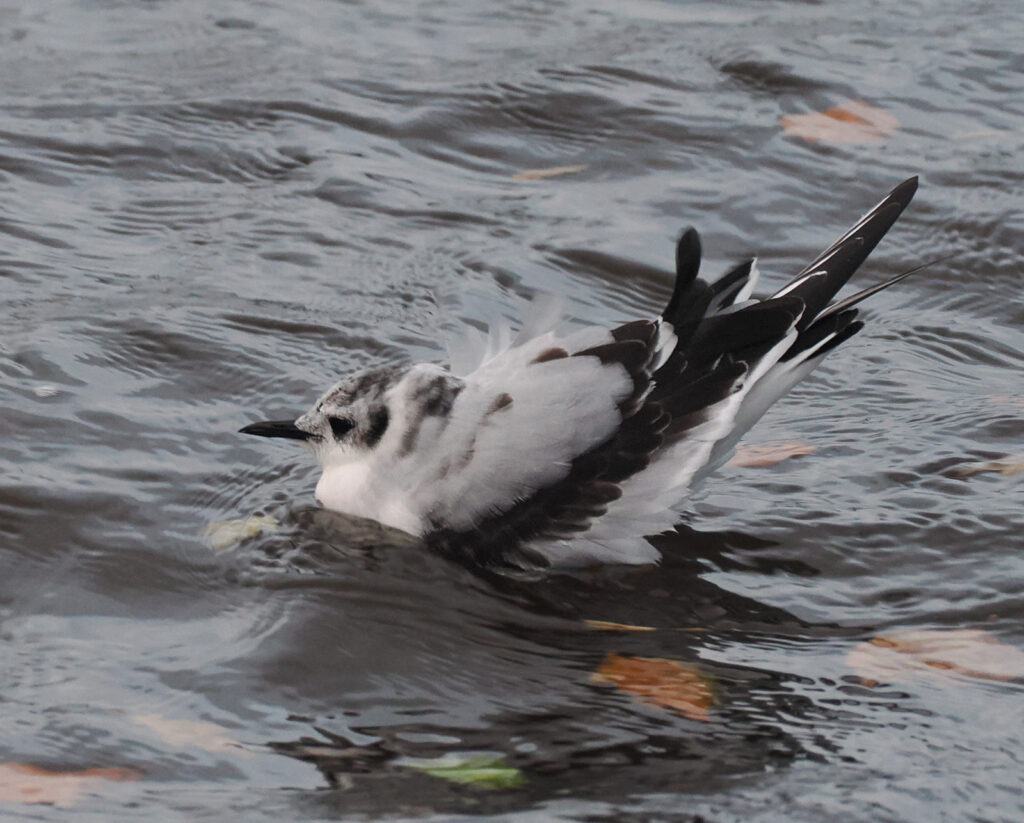
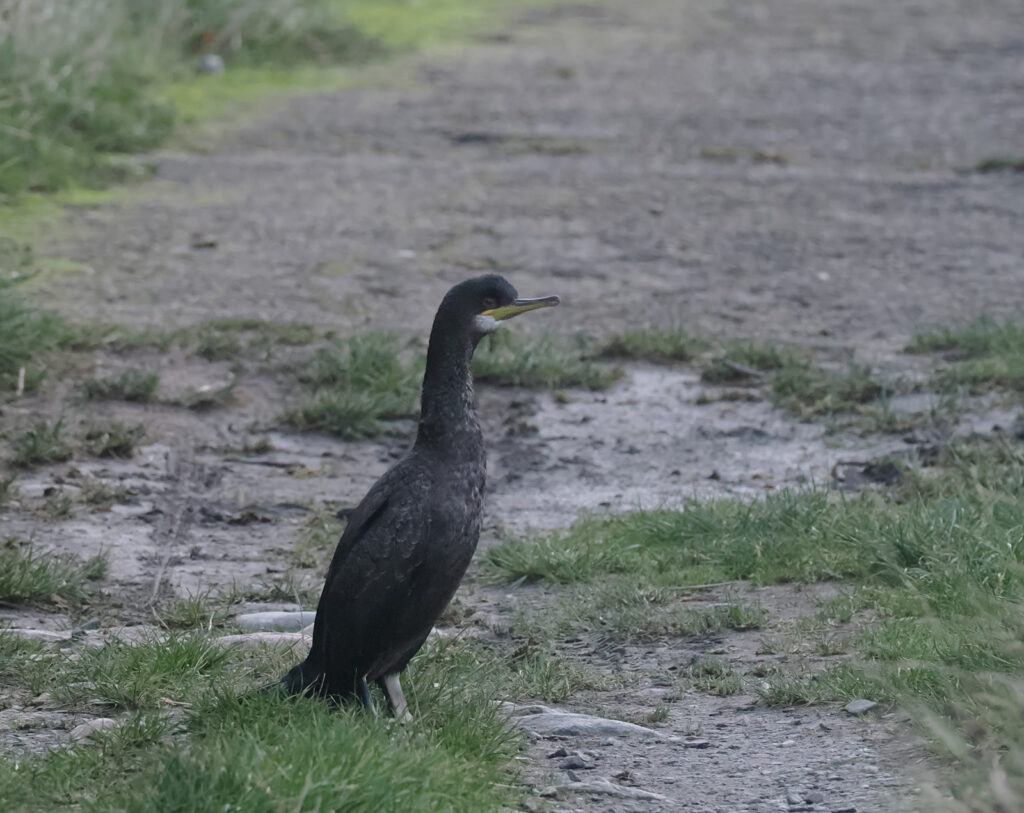
The harbour itself, a modernist monument to the fossil fuel industry, was showing signs that it would struggle to cope with climate change. The north pier sported a gaping hole that diggers were attempting to bandage with boulders. A sturdy metal fence at the base of the old pier had been ripped away by the waves, just a few years after it had installed following the storm-lashed end of the previous fence. A large tree trunk carried down the river had wedged itself along the gap. The local waders, which liked to use the secure area cut off by the fence to roost, were now more circumspect. The harbour had been reconfigured by the storms and the birds were still figuring out its new affordances.
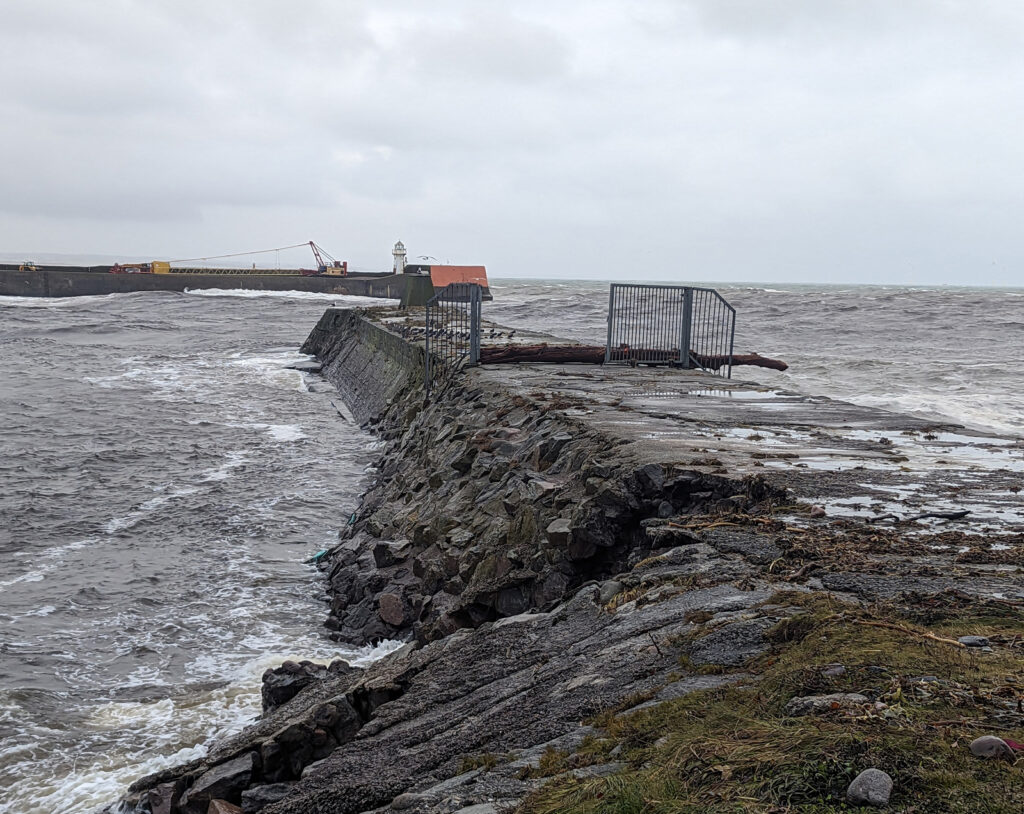
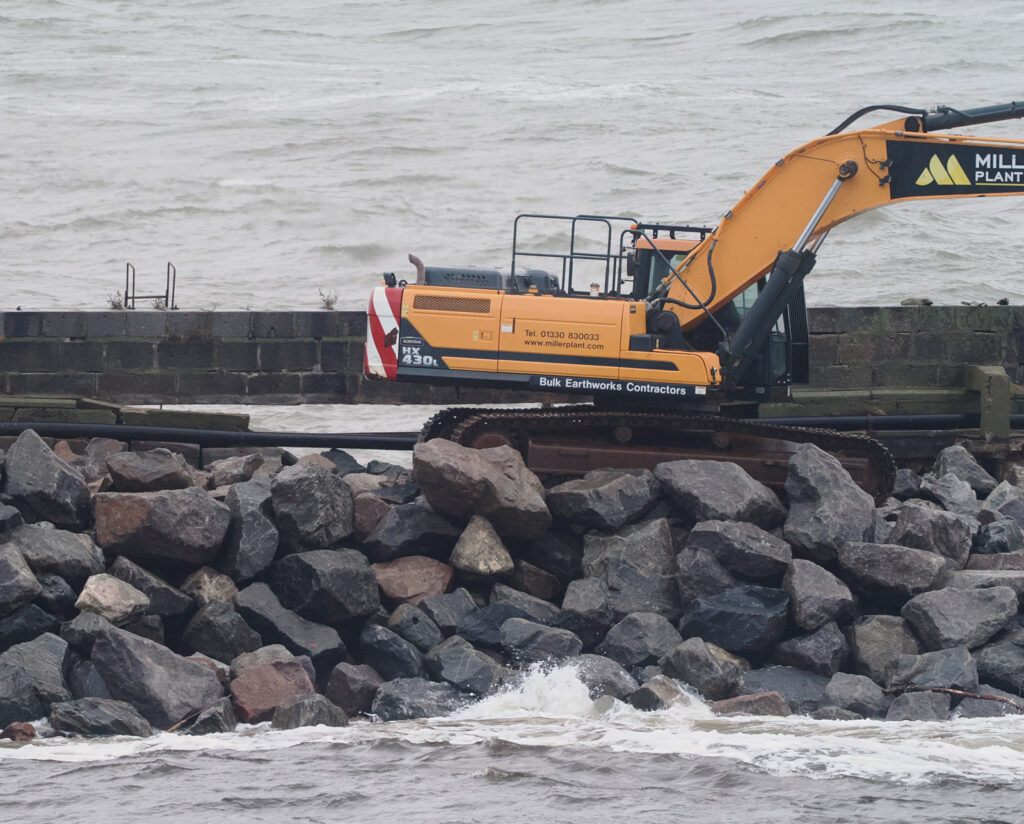
Coda
The climate and ecological crises manifest in loss but also in strangeness. The sea, with its uncanny blend of familiarity and inscrutability, is a focal point for unsettling change.
The coast is not simply a window onto loss but is a place of unexpected rearrangements, where storm waves meet rock, concrete and sand, where surface temperatures swelter fish and the birds that feed on them, and where the land is at risk from rising sea levels.
This is a story of loss and disappearance, of strange abundance and fleeting success, of baselines and expectations disrupted, for both humans and birds. The familiarity that comes from solid infrastructure and regular walks and observations seems more tenuous; the shock of autumn slips into winter and carries survivors uneasily forward.
About the author
Andrew Whitehouse is a lecturer in anthropology at the University of Aberdeen and a birder. His research focuses on environmental themes, including landscape, conservation, perceptions of ecological change, and people’s relations with birds through sound. He co-edited the book Landscapes beyond land: Routes, aesthetics and narratives and is the author of the articles ‘Listening to birds in the Anthropocene: The anxious semiotics of sound in a human-dominated world’ and ‘Loudly sing cuckoo: More-than-human seasonalities in Britain’. A co-edited volume More-than-human aging: Animals, robots, and care in later life will be published by Rutgers University Press in 2024.
All photos in this article are by the author and used with permission. This article is part of our season on Strange Natures.
